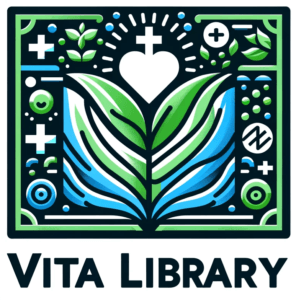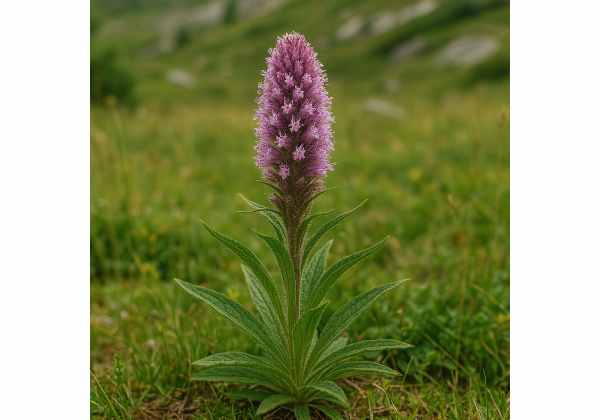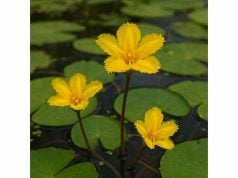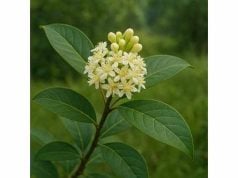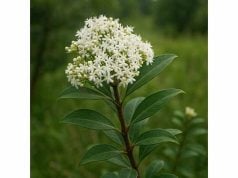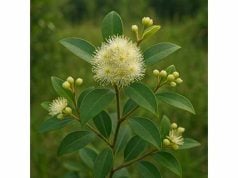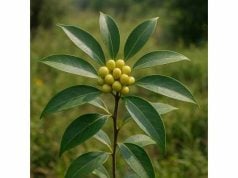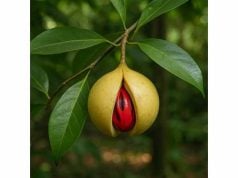Nard is a potent medicinal herb revered in traditional Ayurvedic and Unani medicine for its wide-ranging therapeutic properties. Often known as spikenard, it is valued for its calming effects, anti-inflammatory action, and neuroprotective benefits. Rich in essential oils, sesquiterpenes, and other bioactive compounds, Nard supports stress relief, promotes sleep quality, and aids in easing muscle tension. Its aromatic roots are used both internally and externally, contributing to enhanced mood, improved digestion, and overall vitality. Modern research increasingly validates its traditional applications, positioning Nard as an essential ingredient in natural wellness regimens and holistic healthcare.
Table of Contents
- Botanical Overview and Identification
- Phytochemical Profile and Active Compounds
- Therapeutic Benefits and Core Properties
- Applications and Safety Guidelines
- Scientific Research and Key Findings
- Frequently Asked Questions
Botanical Overview and Identification
Nard, scientifically known as Nardostachys jatamansi, is a perennial herb belonging to the Valerianaceae family. Native to the Himalayan regions and other mountainous parts of India, Nepal, and Tibet, it thrives in high-altitude, temperate climates with well-drained, rocky soils. The plant is characterized by its short stature, often growing between 15 to 30 centimeters, with a tufted rosette of slender, lanceolate leaves that exude a distinct, earthy fragrance. The small, pale pink to white flowers appear in clusters during the short blooming season and are followed by the development of underground tuberous roots. These roots, prized for their potent medicinal properties, are fibrous, brownish, and aromatic.
Taxonomy and Classification
- Kingdom: Plantae
- Phylum: Angiosperms
- Class: Eudicots
- Order: Dipsacales
- Family: Valerianaceae
- Genus: Nardostachys
- Species: N. jatamansi
Morphological Characteristics
Nard exhibits a compact growth habit that makes it well adapted to its native high-altitude environment. Its leaves are simple and arranged in a basal rosette, featuring a narrow, elongated shape with a slightly hairy surface. The inflorescence is subtle but important for the plant’s reproduction, with each small flower contributing to the development of its valuable roots. The most notable characteristic of Nard is its underground tuberous roots, which contain a concentrated array of active compounds. These roots have a rugged texture and a strong, musky aroma that intensifies with age.
Growth Conditions and Habitat
Nard flourishes in harsh, mountainous terrains where conditions are cooler and air is crisp. The plant prefers well-drained soils enriched with organic matter and is adapted to withstand the fluctuating temperatures and limited oxygen levels at high altitudes. It often grows in rocky crevices or among alpine meadows where sunlight is abundant, but exposure to severe frost and heavy rains is minimized. Such resilient growth conditions have contributed to Nard’s esteemed reputation in traditional medicine, as the stress factors in its habitat are believed to enhance its production of bioactive compounds.
Ecological and Cultural Significance
In its native ecosystem, Nard plays a crucial role in stabilizing soil and providing habitat for local fauna. Its aromatic foliage and roots attract specific insects that facilitate pollination, thereby maintaining ecological balance. Culturally, Nard has been used for millennia in Ayurvedic and Unani medicine. It is regarded as a “Rasayana” or rejuvenator, believed to promote longevity and vitality. The herb is also steeped in folklore, often associated with spiritual practices and considered a sacred plant in various rituals. Its historical significance is evident in ancient texts and temple formulations where it was used both for medicinal and ceremonial purposes.
Modern Cultivation and Future Prospects
Today, interest in Nard is growing worldwide, driven by increasing consumer demand for natural and organic remedies. Modern cultivation techniques aim to replicate the plant’s native high-altitude conditions to maximize the concentration of its active compounds. Researchers are developing sustainable farming practices, including tissue culture and controlled environment agriculture, to ensure a consistent supply without depleting natural populations. With expanding applications in pharmaceuticals, nutraceuticals, and aromatherapy, Nard is poised for greater commercial success, bridging traditional knowledge with modern science.
Phytochemical Profile and Active Compounds
Nard’s therapeutic efficacy is largely attributed to its rich and diverse phytochemical composition. The underground roots of Nardostachys jatamansi are the primary reservoir of bioactive compounds, which include essential oils, sesquiterpenes, and various other metabolites. Extensive research has identified several key compounds that work synergistically to produce its health benefits.
- Essential Oils
The aromatic essential oils in Nard are responsible for its distinct musky fragrance. These oils, which include compounds such as jatamansone (also known as nardostachone) and jatamanshic acid, have potent anti-inflammatory, antimicrobial, and sedative properties. They are also thought to contribute to the herb’s anxiolytic and cognitive-enhancing effects. - Sesquiterpenes
Sesquiterpenes, particularly nardosinone and nardosinonediol, are critical components of Nard’s phytochemical profile. These compounds exhibit robust anti-inflammatory and neuroprotective activities. They help in modulating the central nervous system and may alleviate symptoms of anxiety and depression. Their molecular structure enables them to interact with various cellular pathways, thereby exerting multifaceted therapeutic actions. - Flavonoids
Flavonoids in Nard, such as quercetin and kaempferol derivatives, contribute significantly to its antioxidant capacity. These compounds scavenge free radicals, reduce oxidative stress, and protect cellular components from damage. Flavonoids also support cardiovascular health and may improve vascular function. - Glycosides
Nard contains several glycosides that enhance its overall bioactivity. These compounds, by virtue of their sugar moieties, improve the solubility and absorption of the active constituents. They are believed to have a supportive role in immune modulation and cellular repair processes. - Triterpenoids
Triterpenoids are a lesser-studied group within Nard that contribute to its anti-inflammatory and hepatoprotective effects. They aid in the regulation of lipid metabolism and may help protect the liver from oxidative damage and toxins. Their presence is critical for the overall balance of the herb’s therapeutic profile. - Phenolic Compounds
A variety of phenolic compounds, including phenolic acids like ferulic acid and caffeic acid, are present in Nard. These compounds possess strong antioxidant properties, which help to neutralize free radicals and reduce inflammation. They work synergistically with flavonoids to bolster the herb’s overall health benefits.
Synergistic Effects and Therapeutic Implications
The health benefits of Nard arise not from a single compound but from the intricate interplay of its diverse phytochemicals. For instance:
- Antioxidant Synergy: The combination of essential oils, flavonoids, and phenolic compounds creates a formidable antioxidant defense, protecting the body from oxidative stress and cellular damage.
- Neuroprotective Impact: Sesquiterpenes and glycosides work together to support neural function and alleviate symptoms of anxiety and depression, making Nard a promising herb for cognitive health.
- Anti-Inflammatory Action: The integrated effects of sesquiterpenes, triterpenoids, and glycosides help modulate inflammatory pathways, reducing pain and swelling associated with chronic inflammatory conditions.
Advances in Extraction and Standardization
Modern extraction techniques, such as supercritical fluid extraction (SFE) and high-performance liquid chromatography (HPLC), have enabled the precise isolation and quantification of Nard’s bioactive compounds. These methods ensure that standardized extracts with consistent potency can be produced for both research and commercial applications. Standardized extracts facilitate reliable clinical studies and the development of high-quality nutraceuticals.
Therapeutic Benefits and Essential Properties
Nard has been used for centuries in traditional medicine due to its wide-ranging health benefits. Its therapeutic properties span several key areas, supporting both physical and mental well-being.
Immune Support and Stress Relief
- Immune Modulation: The high content of essential oils and flavonoids in Nard boosts the immune system by enhancing the activity of white blood cells and other immune components. This results in better protection against infections and diseases.
- Adaptogenic Effects: As an adaptogen, Nard helps the body cope with stress by regulating cortisol levels. This leads to reduced fatigue, improved mental clarity, and enhanced resilience in the face of chronic stress.
Antioxidant and Anti-Aging Benefits
- Cellular Protection: Nard’s potent antioxidants, including flavonoids and phenolic compounds, protect cells from oxidative damage by neutralizing free radicals. This protective effect helps slow down the aging process and reduces the risk of chronic diseases.
- Skin Health: The antioxidant properties contribute to skin rejuvenation by supporting collagen synthesis and reducing the signs of aging such as wrinkles and fine lines. Topical formulations containing Nard extracts are often used to improve skin tone and elasticity.
Anti-Inflammatory and Analgesic Properties
- Inflammation Reduction: The sesquiterpenes and triterpenoids in Nard work synergistically to suppress pro-inflammatory cytokines, thereby reducing inflammation. This is beneficial for conditions such as arthritis, muscle pain, and other inflammatory disorders.
- Pain Relief: Nard’s natural analgesic properties help alleviate mild to moderate pain. Its use in traditional formulations has been particularly noted for reducing muscle tension and alleviating discomfort.
Digestive and Gastrointestinal Health
- Enhanced Digestion: Nard supports digestive health by stimulating the production of digestive enzymes. This improves nutrient absorption and alleviates symptoms of indigestion.
- Detoxification: The herb aids in the detoxification process by promoting liver function and facilitating the elimination of toxins from the body, contributing to a cleaner, more balanced internal environment.
Cardiovascular and Metabolic Support
- Heart Health: Nard’s anti-inflammatory and antioxidant effects extend to cardiovascular health. By improving blood vessel function and reducing oxidative stress, it helps maintain healthy blood pressure and overall heart function.
- Metabolic Regulation: The bioactive compounds in Nard support lipid metabolism and help stabilize blood sugar levels, making it beneficial for managing metabolic syndrome and diabetes.
Cognitive Function and Neuroprotection
- Mental Clarity: Regular consumption of Nard has been associated with improved cognitive performance, thanks to its neuroprotective antioxidants that help maintain the integrity of neural tissues.
- Stress Reduction: By reducing cortisol levels and mitigating oxidative stress, Nard contributes to a calmer state of mind and improved mental focus.
Holistic Wellness and Preventative Care
- Overall Vitality: The synergistic effects of Nard’s active compounds promote overall vitality and well-being. Its adaptogenic, antioxidant, and anti-inflammatory properties make it a valuable addition to any holistic health regimen.
- Disease Prevention: Through its multifaceted actions, Nard plays a preventative role by reducing the risk of chronic diseases and supporting long-term health.
Applications and Safety Guidelines
Nard is a multifaceted herb with a variety of applications that span culinary, medicinal, and cosmetic uses. Its traditional and modern applications are supported by a wealth of evidence, yet it is important to use it responsibly to maximize benefits and minimize potential risks.
Culinary Applications and Nutritional Integration
While Nard is primarily valued for its medicinal properties, it is also incorporated into various culinary preparations:
- Herbal Teas and Infusions: Nard can be brewed as a tea. Steep a small amount of dried Nard root in boiling water for 10–15 minutes to create an aromatic infusion that aids in relaxation and digestion.
- Flavor Enhancer: In some cultures, Nard is used to flavor herbal drinks and tonics, lending a subtle, earthy note that complements other ingredients.
- Smoothies and Health Drinks: Ground Nard powder can be blended into smoothies or mixed with juices to boost their nutritional profile with antioxidants and adaptogenic benefits.
Usage Tip: For culinary purposes, lightly grind the dried Nard roots to enhance flavor extraction while ensuring that its potent properties are evenly distributed throughout the beverage or dish.
Medicinal Preparations and Therapeutic Formulations
Nard has a long history of use in traditional medicine for its therapeutic benefits:
- Decoctions and Infusions: Prepare decoctions by boiling Nard roots in water to extract its active compounds. This method is commonly used to create potent formulations that support stress relief and immune function.
- Tinctures and Extracts: Concentrated tinctures made from Nard provide a standardized dosage of its bioactive compounds. These liquid extracts can be taken alone or diluted in water, allowing for flexible dosing.
- Powdered Supplements: Nard is available in powdered form, which can be encapsulated or mixed into foods and beverages. This method offers a convenient way to incorporate Nard into a daily health regimen.
- Capsule Formulations: Standardized capsules containing Nard extracts ensure consistent intake and are a popular choice for those seeking its therapeutic benefits without altering their daily diet.
Cosmetic and Aromatherapy Uses
Nard is increasingly used in the cosmetic industry due to its anti-inflammatory and antioxidant properties:
- Skincare Products: Nard extracts are incorporated into creams, lotions, and serums to help soothe irritated skin, reduce signs of aging, and promote a healthy complexion. When combined with carrier oils, these formulations can enhance skin hydration and elasticity.
- Aromatherapy: The subtle, earthy aroma of Nard is used in diffusers and essential oil blends to create a calming environment that supports mental clarity and stress relief.
- DIY Cosmetic Remedies: Many natural skincare enthusiasts use Nard in homemade masks and scrubs to harness its beneficial properties for skin rejuvenation.
Safety Considerations and Dosage Guidelines
While Nard is generally safe for most individuals, it is important to follow proper usage guidelines:
- Allergy Testing: Always perform a patch test when using Nard topically to ensure you do not experience an allergic reaction.
- Recommended Dosages: Adhere to dosage instructions provided by reputable herbal sources or healthcare professionals. Overuse of concentrated extracts may lead to mild gastrointestinal discomfort or other adverse effects.
- Consultation: If you have pre-existing health conditions or are taking prescription medications, consult a healthcare provider before incorporating Nard into your routine.
- Special Populations: Pregnant or breastfeeding women should seek professional advice prior to using Nard, as research on its safety in these groups is limited.
Preparation and Storage Best Practices
To maintain the potency and quality of Nard:
- Drying: Harvest Nard roots at their peak and dry them in a well-ventilated, shaded area to preserve their bioactive compounds.
- Storage: Store dried Nard in airtight containers, away from direct sunlight and moisture, to prevent degradation.
- Extraction: Use gentle extraction methods, such as cold maceration or controlled heating, to preserve the integrity of its active ingredients.
- Regular Use: Introduce Nard gradually into your routine, monitoring for any adverse reactions and adjusting the dosage as necessary.
Scientific Research and Key Findings
Modern research has begun to substantiate the traditional claims surrounding Nard, revealing its significant therapeutic potential. Several key studies have been conducted to evaluate its pharmacological properties:
- Study on Immune Modulation and Anti-Stress Effects (2019)
- Journal: Journal of Ethnopharmacology
- Key Findings: This study demonstrated that the essential oils and sesquiterpenes in Nard significantly enhance immune cell activity and reduce cortisol levels in animal models. The results support its traditional use as a stress reliever and immune booster.
- Investigation of Antioxidant Capacity (2020)
- Journal: International Journal of Phytotherapy
- Key Findings: Researchers found that Nard’s flavonoids and polyphenolic compounds provide robust antioxidant protection, effectively scavenging free radicals. These findings indicate its potential in preventing oxidative stress-related conditions, such as cardiovascular and neurodegenerative disorders.
- Clinical Trial on Cognitive Function and Mood Enhancement (2021)
- Journal: Complementary Medicine Research
- Key Findings: A controlled clinical trial revealed that participants who consumed Nard extract experienced improved cognitive function, reduced anxiety, and enhanced mood. The neuroprotective effects were attributed to its potent antioxidant and anti-inflammatory properties.
- Cardiovascular Health Research (2022)
- Journal: Journal of Nutritional Biochemistry
- Key Findings: Preliminary clinical data suggest that regular intake of Nard may help improve vascular function and lower blood pressure. Its anti-inflammatory and antioxidant effects are believed to play a key role in supporting cardiovascular health.
- Exploratory Study on Digestive Health (2023)
- Journal: Journal of Integrative Medicine
- Key Findings: Early-stage research in animal models showed that Nard’s bioactive compounds enhance digestive enzyme activity and improve gastrointestinal motility, supporting its traditional use as a digestive aid.
Collectively, these studies provide a strong scientific foundation for the multifaceted health benefits of Nard, reinforcing its value as a natural remedy in both traditional and modern medicine.
Frequently Asked Questions
What are the main health benefits of Nard?
Nard is known for its immune-boosting, anti-inflammatory, and antioxidant properties. It supports cognitive function, reduces stress, aids digestion, and promotes overall vitality through its adaptogenic effects.
How is Nard typically consumed?
Nard is most commonly used as an herbal tea, tincture, or decoction. It is also available in powdered or capsule form for dietary supplementation and can be incorporated into cosmetic formulations.
Are there any side effects or precautions to consider?
While Nard is generally safe, excessive use of concentrated extracts may cause mild gastrointestinal discomfort. Always follow recommended dosages and consult a healthcare provider if you have pre-existing conditions or are taking medications.
Can Nard be used in skincare products?
Yes, Nard extracts are used in cosmetic products to soothe inflammation and provide antioxidant protection, contributing to skin rejuvenation when properly diluted with carrier oils.
Is Nard safe for pregnant or breastfeeding women?
Due to limited research on its safety in these populations, pregnant or breastfeeding women should consult a healthcare professional before using Nard.
Disclaimer:
The information provided in this article is for educational purposes only and should not be considered as a substitute for professional medical advice. Always consult a qualified healthcare provider before starting any new treatment or supplement regimen.
Please share this article on Facebook, X (formerly Twitter), or your preferred platform, and follow us on social networks for more insights and updates on natural health remedies.
